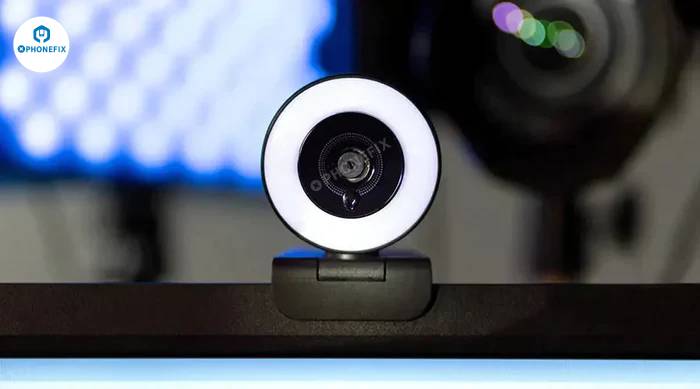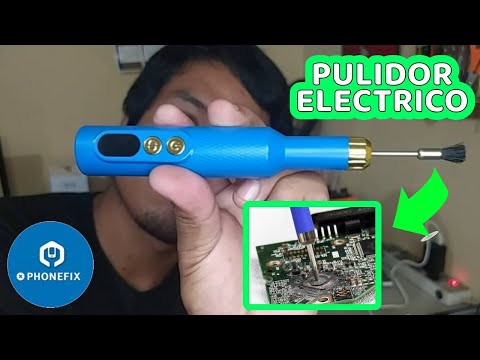Webcams have become a part of everyday life. From types of webcams to specifications and features, this webcam buying guide will teach you everything you need to know to select the best device for your needs.
Overview

With COVID-19 keeping people home longer and many companies moving jobs to be permanently remote, the usage of webcams was prioritized to enable efficient and engaging face-to-face remote communication.
Besides, many YouTubers are streaming live videos to larger audiences with the help of webcams nowadays. You can also use a webcam if you are using apps like Zoom, Google Hangouts, Skype.
Having the right USB webcam is more important than ever with quarantine and remote work edging on.
When to use a webcam
People use USB webcams for different things, from school to work to socializing; even non-USB webcams are on the table to tack onto your computer. Whilst most laptops will have their own built-in webcams, these tend to be relatively low quality, blurry images, and often not easy to position properly.
With fewer space constraints, external webcams typically have higher quality components, providing better resolution, speed, fluidity, color balance, autofocus, light correction and noise reduction, and the ability to frame yourself just right.
Points to consider when buying a webcam
Find out what features you should prioritize when looking for a new webcam, including:
I. Key webcam terms
|
The 7 Key Factors to Consider When Choosing a USB Webcam for Streaming

1. Resolution
The higher the resolution, the better the image quality. A standard webcam has 1080p, which is decent, but nothing beats 4K. That’ll give you the clearest picture possible with your USB webcam. 4K webcams are becoming available and these should give razor sharp video. It gives the option to crop the video if required.
Here are the three most common webcam resolutions:
1280 x 720 pixels/720p (HD Ready)
1920 x 1080 pixels/1080p (Full HD)
3840 x 2160 pixel/4K (UHD)
2. Frame Rate
The frame rate dictates how smooth the video output will be. Higher fps gives you more fluid recording and streaming and less choppiness. Common frame rates are 30fps and 60 fps.Although 30fps should be OK, 60 fps will give a smoother picture.
3. Field of View (FOV)
Typically, USB webcams have fields of view of 65 to 90 degrees. A narrow FOV is perfect for capturing people’s faces, while a wide FOV helps record a conference room.
Often a mid range figure is good - a common field of view in this range is 78°, and it is a balance of what you want and what is available. Here is a basic rundown on a field of view:
- 60-degree FOV captures someone directly in front of the computer
- 78-degrees FOV can capture two people in front of the computer
- 90 degrees can capture a conference table and/or whiteboard for presentations
- Vertical video is capable of panorama shots.
4. Microphone
An often-overlooked feature is the webcam microphone. Webcam microphones are often designed to capture the sounds of the entire room and easily capture background sounds.
If you live in a noisy environment or working in the same room as someone else, the best sound can often be gained from a good quality external microphone. It can cost extra money, but if a good microphone is bought, then it can significantly enhance the sound.
5. Webcam Lens
The wider the aperture, the better the picture is likely to be. The bigger the lens, the better the picture. In line with other photographic lenses, the it is measured as an "f" number. Many webcam lenses have an aperture of between F2.0 and F2.8.
The lens determines how much light reaches the sensor. In other words, the more light hits the sensor, the clearer you’ll be in low lighting.
Plastic Lens vs. Glass Lens
If you’re looking to use your webcam for streaming at 2K/4K, you would want to avoid a plastic lens. Glass lenses allows webcam up to 4K and it is perfect for content creators or anyone looking to get the clearest, cleanest video and image.
Besides, webcams with plastic lenses are also more easily scratched than webcams with glass lenses.
6. Interface
Virtually all webcams use a USB interface. This can easily be plugged into the computer - virtually every computer has USB. Otherwise, an adaptor may be required.
Most webcams will use a USB Type A connector, and normally a USB 2.0 will provide sufficient data rate. If your computer has a USB 3 interface using Type C connectors then an adaptor or even a USB hub with USB Type A connectors will be needed.
7. Fixed or variable focus
Many budget webcams are fixed focus, and also the wider the field of view the less critical focus is, so that is one reason why budget webcams tend to be wider angle.
These webcams are set to work well if you are sitting in front of the camera, but outside this distance, things may get a little less sharp.
II. More Additional Features
1. Autofocus

More expensive webcams typically have autofocus - the system automatically adjusts the focus to what is needed. These systems normally work very well, as they are not intended for TV or movie quality.
Higher quality autofocus can be better at dealing with multiple light sources, or areas with busy backgrounds. Most modern webcams have autofocus, with some being better or quicker than others. Some webcams will allow you to toggle autofocus on and off.
2. Low-Light Correction
Just like with autofocus, low-light correction is a built-in feature in most modern webcams. This feature can brighten and adjust images in dark rooms.
An excellent way to deal with potential lighting problems is to look for USB webcams with auto focus and low-light correction. Most webcams have auto-focus, but the higher-end models have better quality.
If your home office doesn’t get the best light and you’d instead not string together a bunch of lamps, it’s best to invest in a USB webcam that can deal with that through internal tech or ring lights.
3. Optical Zoom
USB webcams with optical zoom can add additional functionality and better picture quality. A webcam with 10x optical zoom can capture up to 20 participants in one video window.
Auto focus features ensures clear images, even at high zoom settings. In addition, it can also be installed on any computer and is a easy to use small-form USB webcam.
If your looking for a webcam with 10x optical zoom, make sure to read more about our 5.0MP 4K USB Webcam.

It shoots video at a friendly 1080p resolution, uncompressed, 10x optical zoom for lens and 6x digital zoom for software, the 5.0MP USB Webcam brings simplicity to the 4K recording experience. It suits for shooting close-ups at a distance, high-definition without distortion.
4. Software Support
Some of the more high-end webcams come with a full range of software support. The main benefit of having a webcam with software support is that it gives you more control over every aspect of the device.
Software features can range from anything previously mentioned in this list to other functions like slow-mo effects and RGB sync, allowing you to see and set resolutions, frame rates and zoom.

Summary
Webcams do not have to cost the earth, but buying a reasonable one will pay dividends over just buying the cheapest one on the market. We hope this webcam buying guide helps you understand all the specifications and features you need. More USB cameras can be found on PHONEFIX.
If you have any other doubts or queries, let us know using the comments section. Our team of experts will help you out. You can also post your thoughts and opinions in the comments box.
Also Read:
How to Select a Lens for Industrial Camera
Why We Choose A Specific Industrial Camera?












